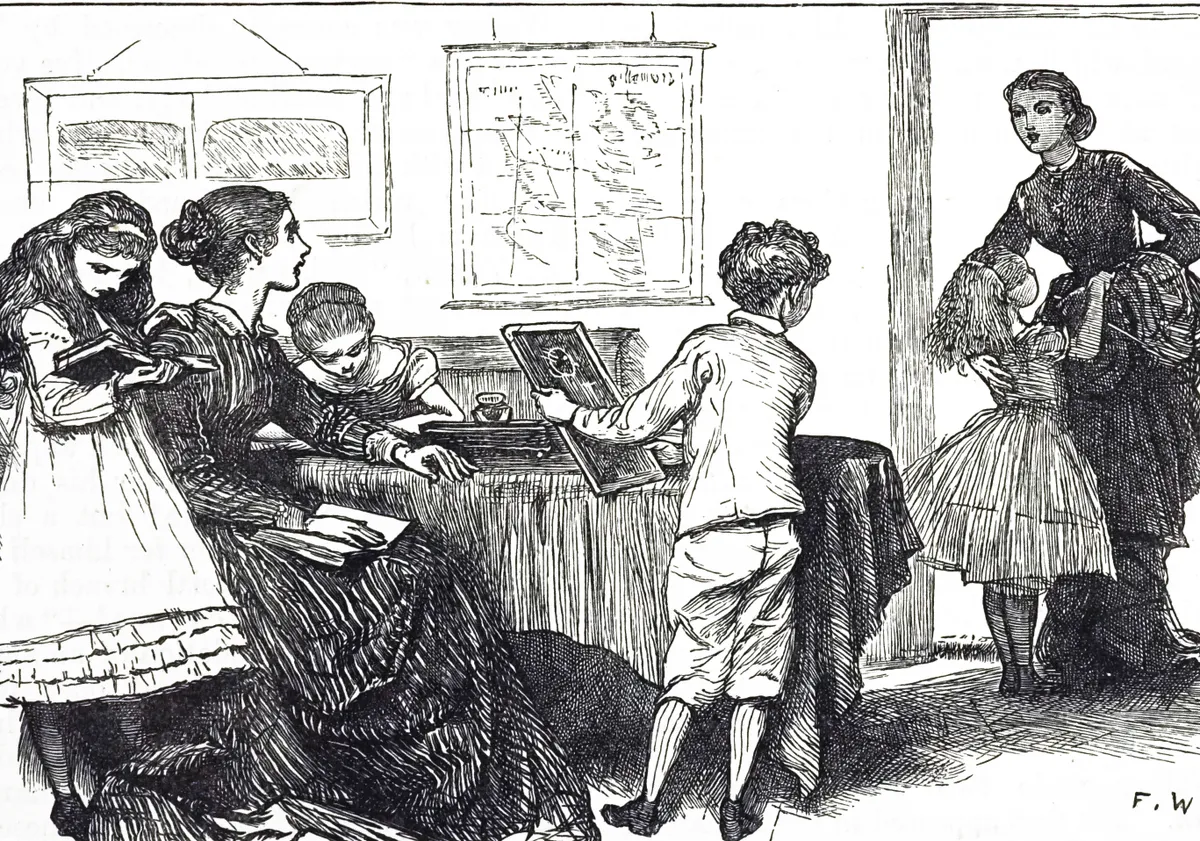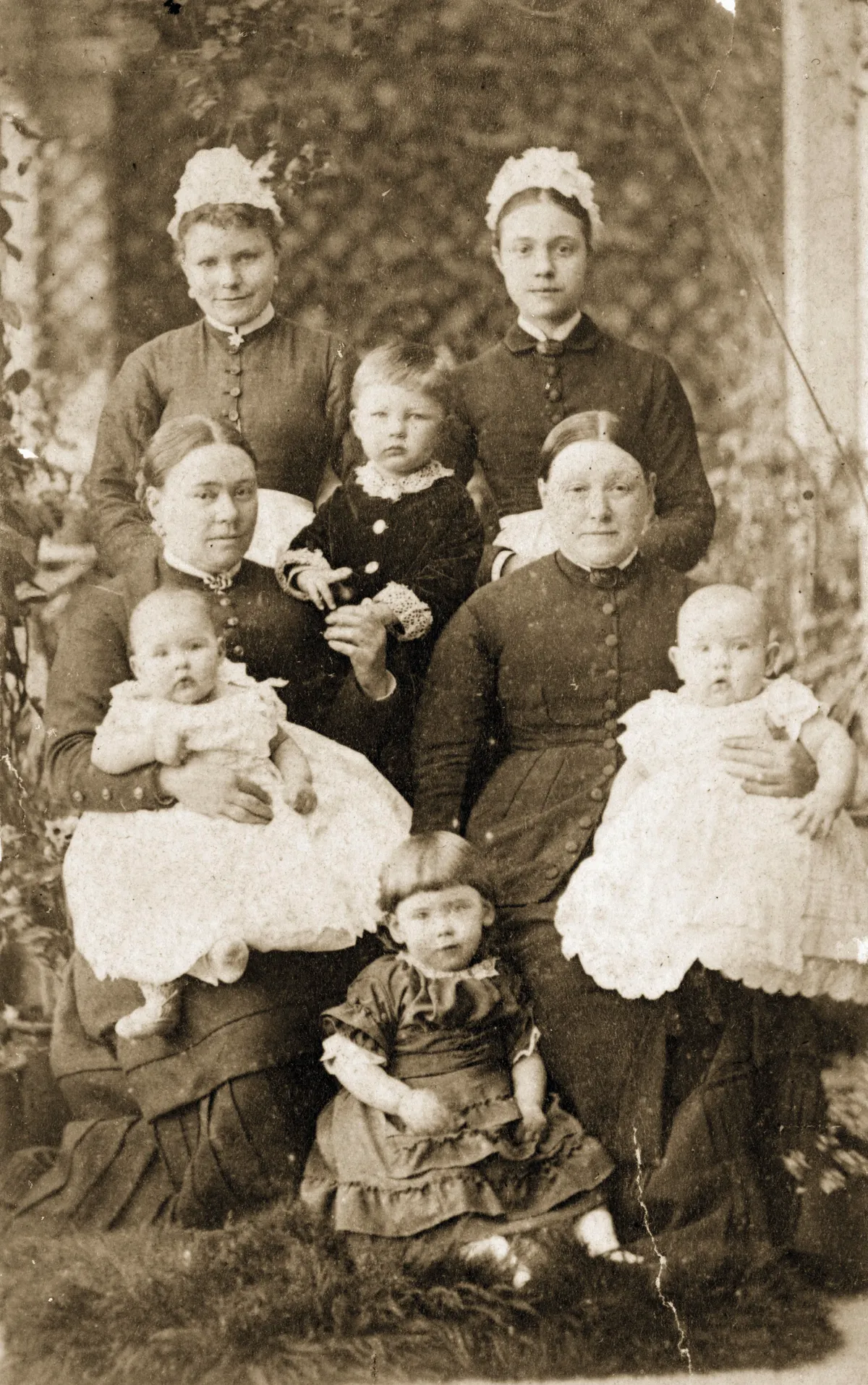Only a scattering of upper-class families employed female tutors for their daughters in the 17th and early 18th centuries. By the Victorian era, however, it was not only aristocrats relying on a governess, but the majority of moneyed middle-class parents as well. A live-in governess was both a sign of their own social status, and a means of instilling in their daughters the skills needed for their future married life in a safe and suitably domestic environment. What had once been a relatively niche profession was booming by the time of the 1851 census, when some 25,000 women were working as governesses.
Many governesses had similar backgrounds to their pupils. Often the daughters of professional men – clergy, merchants, military officers, surgeons and solicitors – some had been deliberately educated for a life in the schoolroom, but a shortage of marriageable men and a series of bank failures in the early 19th century meant that a swathe of young women reared to be ladies of leisure were suddenly required to earn their living, too. Governessing was the most ladylike and respectable vocation available.
A swathe of young women reared to be ladies of leisure were suddenly required to earn their living
It required no formal academic qualifications or training. While Queen’s College in Harley Street, Marylebone, Central London, awarded certificates to governesses, very few parents demanded any such evidence of proficiency. A governess’ family and upbringing were more important than her education and intellect – the more genteel the better. The knowledge a governess had gleaned from her own schooldays was usually more than sufficient to secure a job, although she may have supplemented it with advice from the multitude of manuals, like Sir George Stephen’s 1844 The Guide to Service: The Governess, which offered guidance on everything from how she should conduct herself while living in her employer’s household, to what she should teach and how to teach it.
The three R’s
With younger children, she began with reading, writing and arithmetic. Lessons in English literature, history and geography would be required for older children, along with tuition in letter writing, polite conversation and needlework. A governess was also counted on to oversee her pupils’ moral and religious development – studying the Bible with them and encouraging them in acts of charity – and to supervise regular exercise, which usually meant taking them for a long walk or ride each afternoon.

Certain accomplishments gave her an advantage in a buyer’s market, where supply far exceeded demand. Unlike her Georgian predecessor, who usually moved from one post to another on recommendation, the Victorian governess seeking a new position was often one of many responding to an advertisement or inquiring via a scholastic agency. Women with the ability to tutor girls in music were always more sought after, as were those who could teach fashionable languages such as French and Italian.
The fierce competition kept wages low for those less qualified. Victorian governesses in the wealthiest households earned over £100 a year, but between £35 and £80 per annum was more common, although author Charlotte Brontë’s salary of £20 (with a £4 deduction to cover washing) was by no means unusual. Indeed, some advertisements offered only board and lodging.
If a governess was lucky, this meant her own room. If she was really lucky then she might have a small private sitting room, too. If she was not, she shared a bedroom with her pupils, and had only their schoolroom to retreat to in the evenings – the only part of the working day that she had to herself. Ideally, she enjoyed her own company, because otherwise governessing could be a lonely and depressing way to earn a living. The advice manuals were clear that she should not impose herself on her employers (particularly not when they were alone) nor make the staff (her social inferiors) her friends and confidants. Governesses “must hear the echoes from the drawing-room and the offices, feeling that, in a house full of people, they dwell alone” said Fraser’s Magazine in 1844.
Governessing could be a lonely and depressing way to earn a living
Behavioural advice for the governess was plentiful. “Do not be the most prominent in conversation, but ever be modest and retiring,” the author of Hints to Governesses counselled in 1856. And “dress neatly and becomingly”, she recommended, advising that disposable income be saved for times of hardship and not spent on fashionable gowns.
A life of insecurity
By its nature, the work of a governess was insecure. Even if an employer’s brood was large, she was only ever needed until the children grew up. The whim of her employer or the wilful misbehaviour of her charges could easily put her out of work, too, and she would probably be left seeking a new situation – and a new home – several times in her life. What’s more, there were not the same opportunities for promotion as in service, and marriage was a remote probability, given the lamentable lack of society offered by her long hours and live-in work.

The insecurity and low wages that made saving money difficult, particularly for those with family to maintain, combined with the lack of state welfare support prompted the foundation of the Governesses’ Benevolent Institution (GBI) in 1841. This organisation provided annuities to the neediest ex-governesses, and invested savings securely on behalf of those who were still gainfully employed to better prepare them for a time when work was no longer possible.
But while the plight of the downtrodden, unappreciated governess – highlighted by everyone from novelists to feminist campaigners – caught the public imagination in the 19th century, many enjoyed their job. Teaching in a private household offered more autonomy than teaching in a school. Some had kind, generous employers, and developed close and rewarding relationships with their charges.
Sometimes, too, governesses found excitement out of reach to many of their married peers. For example, in her diaries from the 1850s Mary Bazlinton – who had left behind a post at a ladies’ seminary in Lincolnshire – describes how her employment with the wealthy Bradshaw family took her off to Paris and the fashionable south of France.
The number of governesses eventually declined as the idea of sending girls to school became more acceptable. However, they remained familiar figures in the homes of the aristocracy and gentry in the early 20th century and the interwar years. While sometimes better qualified than their Victorian counterparts, their role and responsibilities and the scope of their curriculum were largely unchanged.